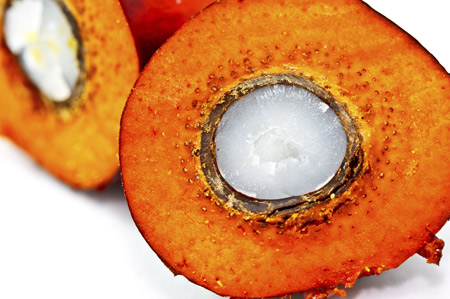Palm Oil Pushes Through Drought, Fire and Smoke
Category: Oilseeds
 (Wall Street Journal) – Palm-oil production is holding up and stocks are accumulating despite drought, fire and a choking haze that is smothering plantations across Malaysia and Indonesia.
(Wall Street Journal) – Palm-oil production is holding up and stocks are accumulating despite drought, fire and a choking haze that is smothering plantations across Malaysia and Indonesia.
There is no sign of a slowdown from the two countries, the world’s largest producers of palm oil. Indonesia’s exports in October were up 9% from the month before, according to the Indonesia Palm Oil Association.
In Malaysia, total crude palm-oil production in October was up 4% from September and 7.6% from a year earlier, at 2 million metric tons, according to the Malaysia Palm Oil Board, while palm-oil stocks were up 7.3% from the month before and 31% from a year earlier.
“October’s data are bearish for the price of palm oil,” said Hamish Smith, commodities economist at Capital Economics. Although the El Niño weather phenomenon increases the possibility of yield-limiting severely dry conditions, “the rise in stocks should limit the upside potential for the price,” he added.
The Bursa Malaysia January palm-oil contract closed at 2,330 ringgit ($532) a metric ton, down 52 ringgit, following the release of the data. That is still up significantly from late August, when the price reached its lowest since 2009. But the rally—which developed as El Niño concerns grew—has “run out of steam a bit because the reality is there is plenty of palm oil around today,” said Michael Coleman, managing director at RCMA Asset Management.
Advertisement
Historically, prices have rallied sharply in El Niño years. They rose around 40% during 2006, when the last El Niño was in play. But the growth cycle of oil-palm fruits means the extent of damage isn’t expected to be known until early in 2016.
“A lot of plantations are having a really hard time,” said Augyawati Joe, spokeswoman for the Indonesia Palm Oil Association, but it isn’t yet showing up in production figures.
Harvest continues as normal even though much of Malaysia and Indonesia is smothered in smoke from fires set by landowners to clear land for new plantings of palm-oil and pulpwood trees. El Niño, by prolonging the dry season, has worsened the effect of the fires.
By reducing sunlight and interfering with photosynthesis, the haze could show up in lower yields in three to four months’ time, said Ivy Ng, an analyst with CIMB.
“The El Niño impact will be in the first quarter of next year as only when the situation gets dangerous do they stop harvesting,” Ms. Ng said.




